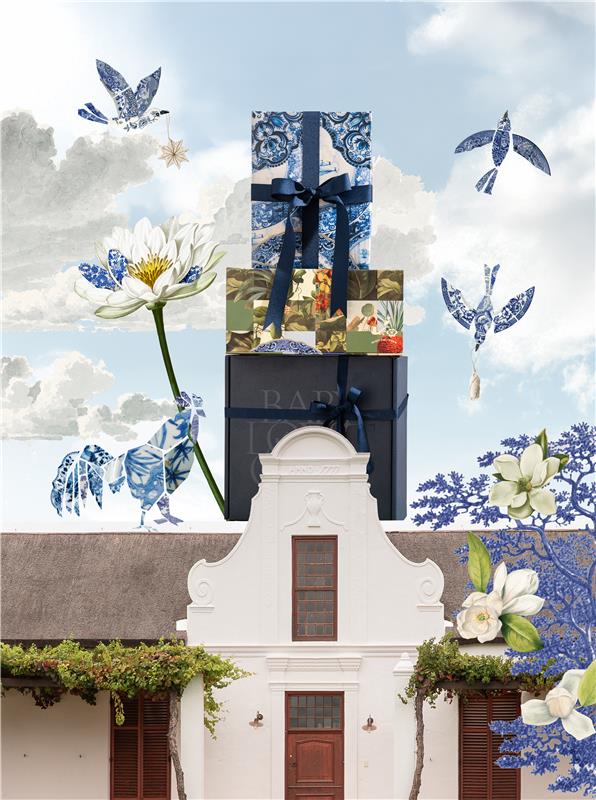Future of the Karoo Succulent Garden
June 9th, 2025Ancients on display
Etched against the London sky, a tough, alien landscape stands apart in a sea of woodland and meadow-inspired softness. With stark, sculptural outlines and a desaturated palette, the sparse otherness of the Karoo Succulent Garden draws one in along its dry riverbed, revealing different biomes forged by drought and deprivation.
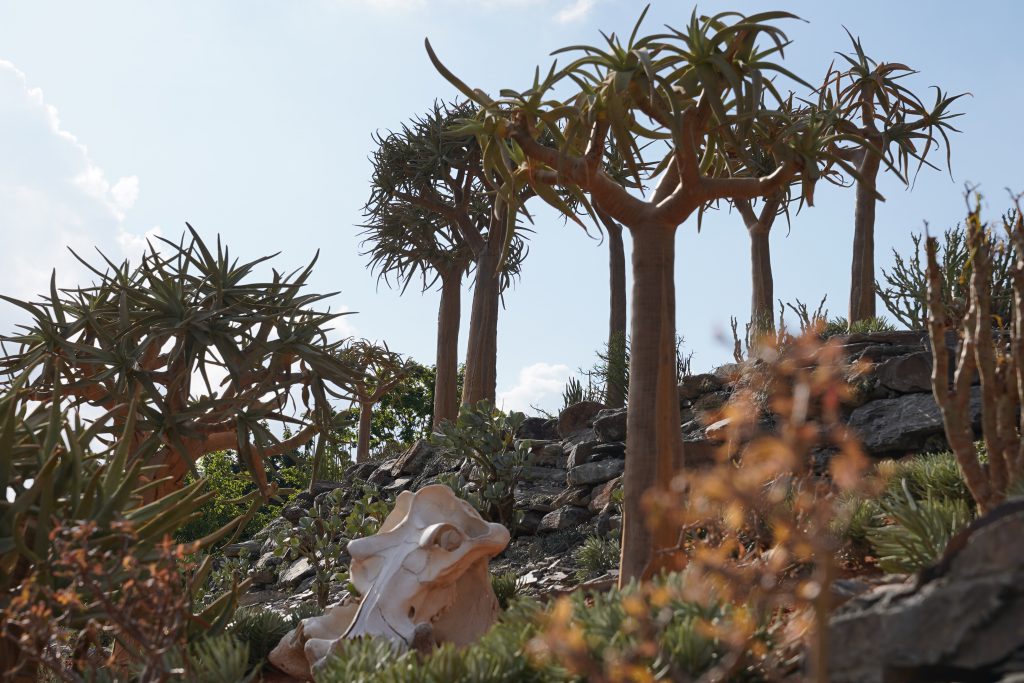
Botanical diplomats
Conceived as a non-competitive exhibition garden for the RHS Chelsea Flower Show, the Karoo Succulent Garden was 11 months in the planning and included 200 tonnes of UK-sourced stone and 6000 succulents representing roughly 160 species – most of which were sourced from England and Europe. Read more on this feat of intercontinental planning and plantsmanship executed by the garden teams of The Newt in Somerset and Babylonstoren here.
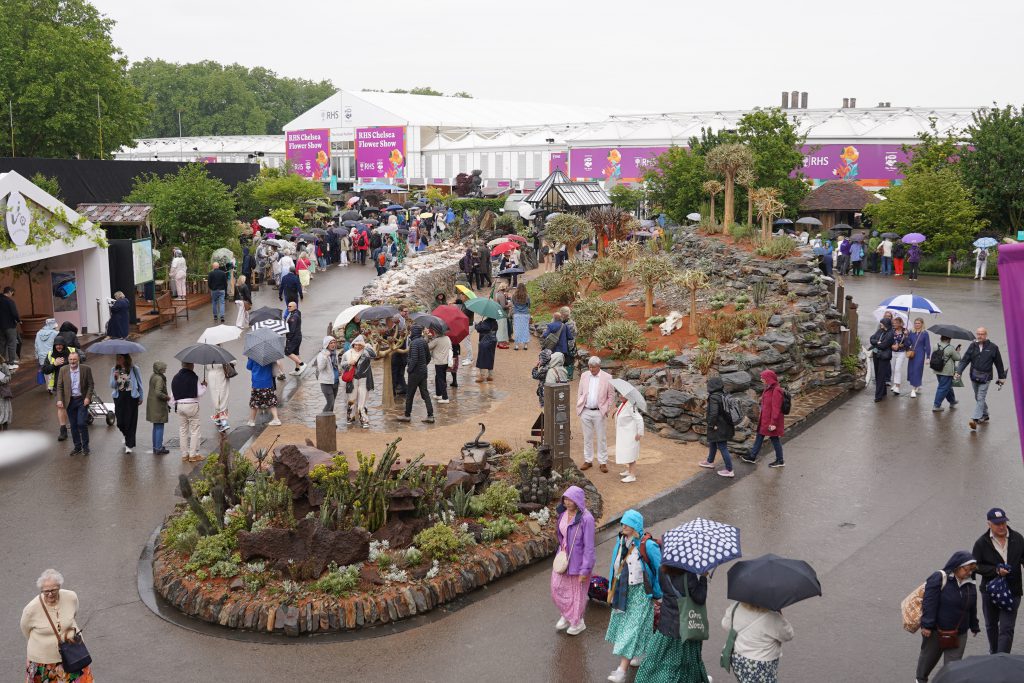
A landscape with longevity
What becomes of the thousands of plants, trees and flowers on display once the world’s greatest horticultural show draws to a close? And what of these African succulents, who would not survive even one English winter outdoors?
When the bell rings and the crowds drift away, Chelsea transforms into a hive of deconstruction – entire gardens, built over weeks, are dismantled in a matter of hours.
The Karoo Succulent Garden was meticulously packed and transported to The Newt in Somerset, where it is being kept under exacting conditions until the garden can be reassembled in a permanent structure – to become the only exhibition dedicated solely to Karoo succulents outside South Africa.
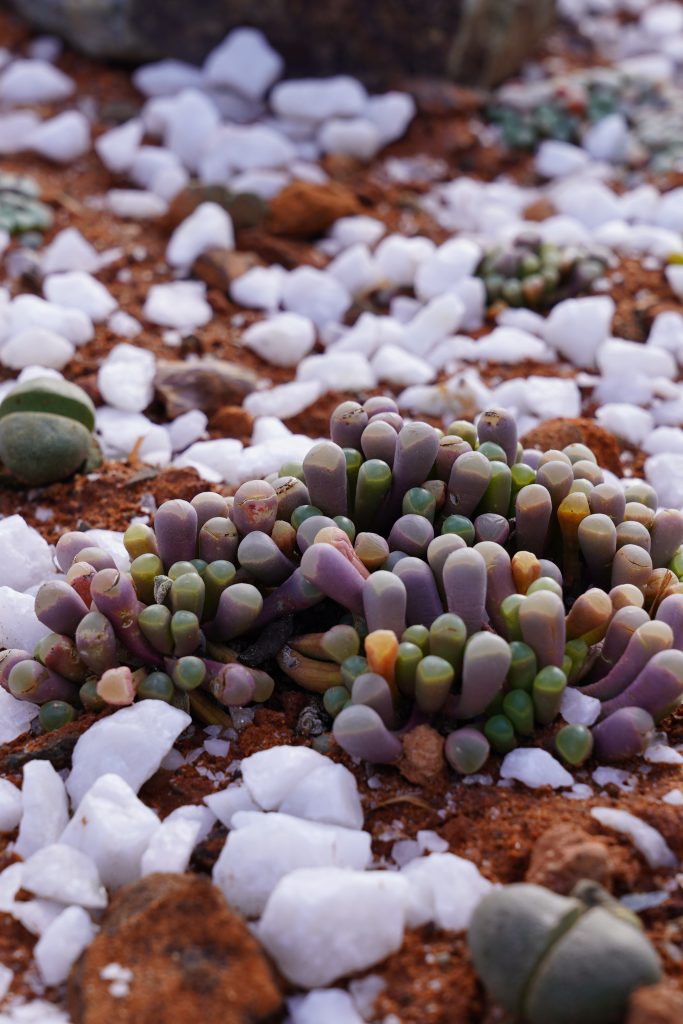
Many hands, light work
Dr Ernst van Jaarsveld, master botanist at Babylonstoren and global authority on South African succulents, described the process as swift and highly successful.
“We started with the euphorbia hill, followed by the Knersvlakte section, then moved on to the botterboom hill, and finally the quiver tree plateau. We completed this on Saturday evening after Chelsea closed. Plants were potted where needed, placed in Dutch trolleys and carefully packed. The following day, all the quiver trees were dug out and loaded for transport back to The Newt,” he says. “Some plants had already started rooting in their new environment! It’s always stressful for plants to be moved, but The Newt has excellent horticulturists who will help them settle and thrive quickly.”
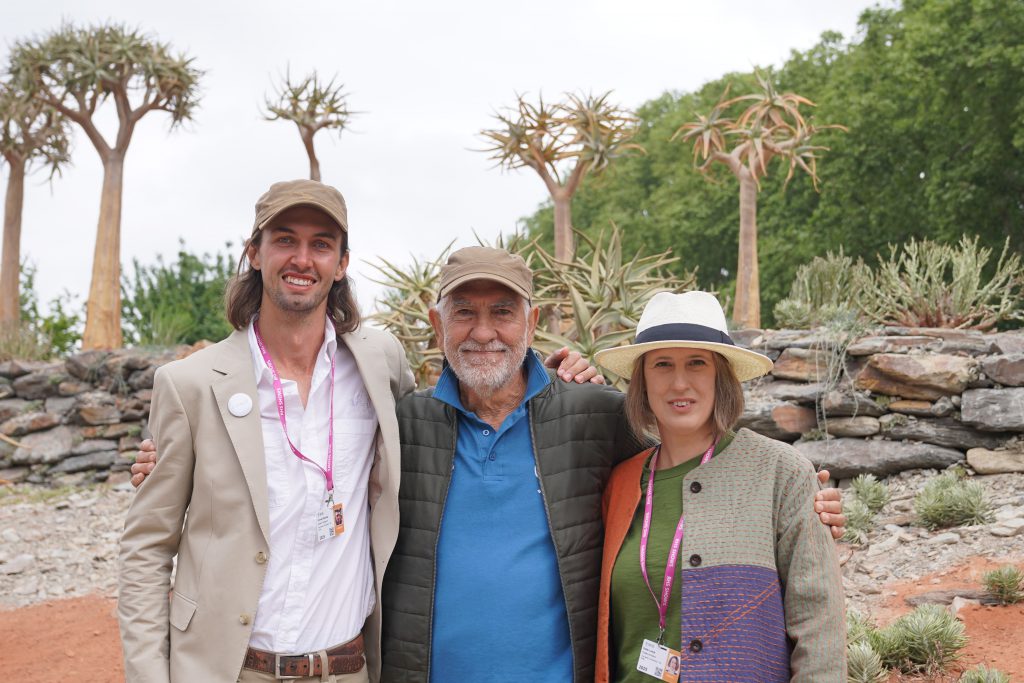
Challenging perceptions
Katie Lewis, estate architect at The Newt who designed the Karoo Succulent Garden in collaboration with the team at Babylonstoren, will oversee its permanent installation at The Newt. Those eager to view the majestic quiver trees in the UK should keep an eye on The Newt’s social media channels.
For Harry Baldwin, head gardener at The Newt, the project presents an opportunity to challenge prevailing perceptions of succulents in England.
“They’re often thought of as small, decorative houseplants, but the reality is far more fascinating. By recreating a slice of the Karoo, we want to spotlight an ancient, diverse ecosystem shaped by extreme conditions. It’s a landscape full of plants with extraordinary adaptations, and by giving this garden a permanent home in the heart of Somerset, we hope to inspire curiosity, shift assumptions and encourage a deeper respect for these incredible plants.”
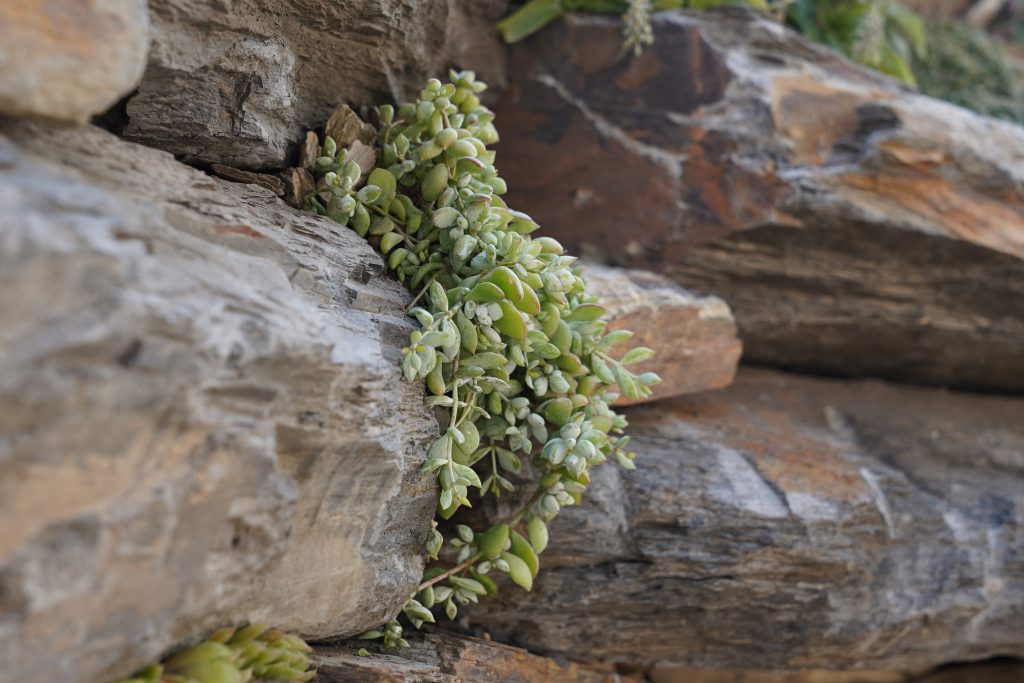
Ex situ conservation
Dr van Jaarsveld is delighted at the prospect of a succulent garden in Somerset and feels the educational value and ex situ conservation in England justify the effort. “There will always be those who disagree but the reality is that most of the plants were sourced from existing collections in England and Europe. Only the quiver trees and a few larger euphorbias were flown in. With the right conditions, these plants will thrive – and from experience, we know they will adapt well, including the quiver trees that have proven to do well in heated glasshouses. Some of the rarer species are now more common overseas than in our own country. Many are well established in Europe – a great example of successful ex situ conservation,” he concludes.
Cornell Beukes, fellow succulent expert at Babylonstoren, offers another perspective on the plight of rarer succulents.
“To be honest, I think they might even be safer at The Newt than in South Africa, given the extent of plant theft locally. But it’s also a significant conservation initiative – ensuring these plants live on and helping to raise global awareness of South Africa’s incredible biodiversity.”
Power to adapt
There may be another more long-term, potentially symbiotic purpose to the succulent garden’s future in the English countryside. By mid-May, the UK was experiencing its driest spring in over 100 years. Visitors to this year’s Chelsea Flower Show would have noticed the profusion of bristly fibres from London plane trees in the air – worse than normal, and a consequence of the unusually warm, dry conditions. These were also the cause of the eponymous “Chelsea cough” that brought discomfort to many during the show. Though the driest English spring in over a century is still substantially wetter than the Nama Karoo, a seed is being planted for posterity.
“As the earth grows hotter and drier, and the English are forced to adapt their gardening styles, the value of drought-adapted plants will become more relevant. These plants have evolved under harsh conditions – what we’re seeing is nature’s brilliant, refined end-products,” says Ernst. “In short, these plants all tell a good story – adapt to your environment!” Sage words, indeed …
Sourcing the Karoo Succulent Garden:
- No plants were removed from the wild.
- All specimens were sourced exclusively from licensed commercial nurseries or registered private collections, whether in England, mainland Europe or South Africa.
- All local and international regulations were strictly observed in the transport of plants, rocks and associated materials.
- No live animals or invertebrates were included in the display.
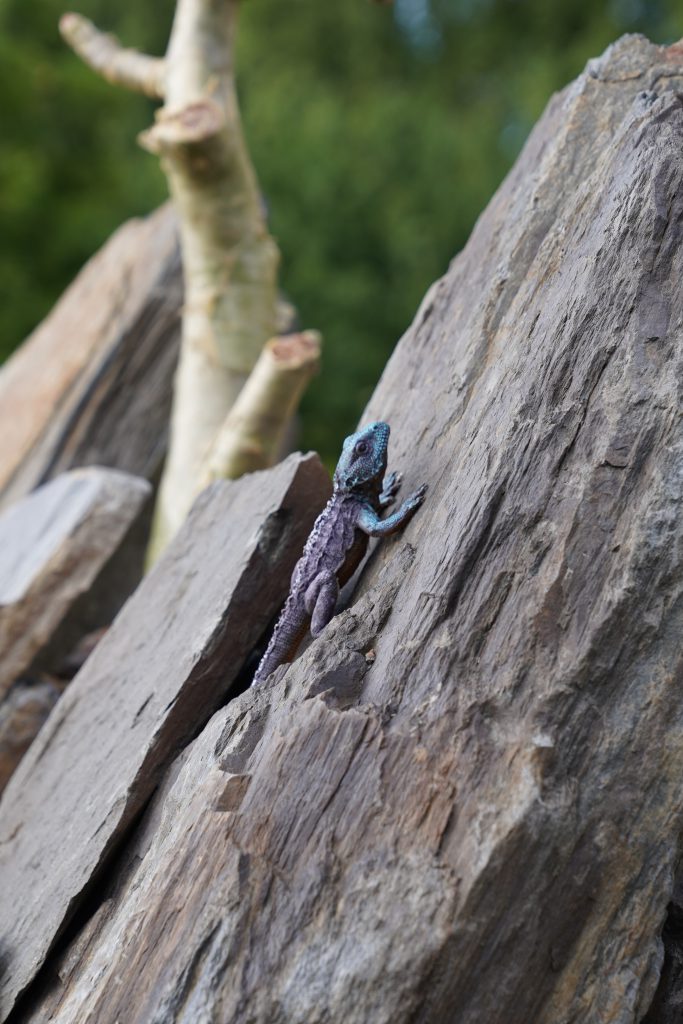
What happens to other Chelsea gardens?
As was the case with the Karoo Succulent Garden, some exhibitors transport their plants and materials home with them. For those who choose to donate theirs, there’s Wayward – the official reuse partner of the RHS Chelsea Flower Show for the ninth year running. To date, Wayward has redistributed approximately 100 000 plants, 500 tonnes of materials and 1000 large shrubs and hedges from Chelsea to schools, care homes, fire stations, community gardens and other deserving non-governmental organisations.


